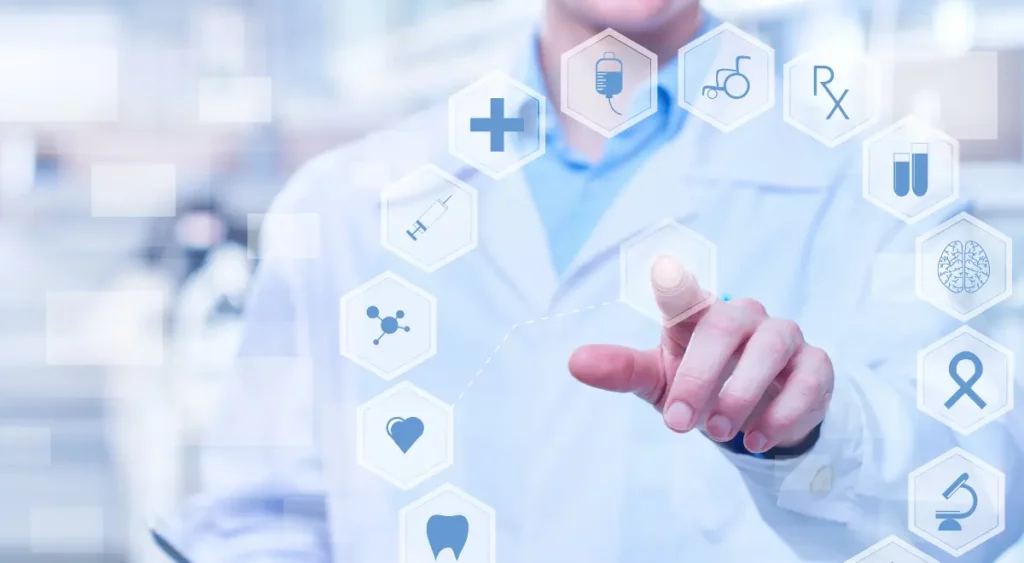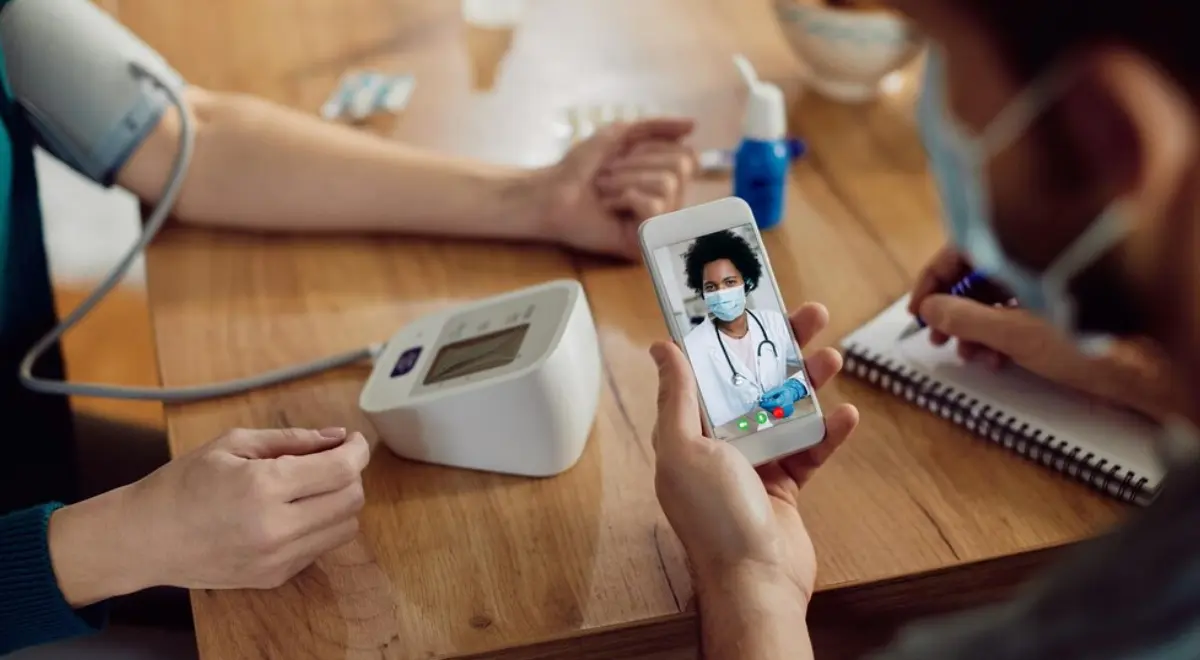How Cybersecurity Threats Are Shaping the Future of RPM Systems?

As advancements in healthcare technology accelerate, so do the risks of cybersecurity vulnerabilities. Remote Patient Monitoring (RPM) systems are frequently exposed to cybersecurity risks. With an increasing frequency of cyber threats, healthcare software providers must employ proven strategies to safeguard sensitive patient data and ensure the integrity of their healthcare system.
In this blog we’ll dive deep into the relationship between cybersecurity threats and the future of RPM systems.
Table of Contents
ToggleThe Interconnection Between RPM Systems & Cybersecurity Threats
Remote patient monitoring systems allow healthcare providers to monitor their patients remotely and track their health data in real-time. These systems make use of FDA-approved remote monitoring devices for reporting patient’s vitals and health metrics directly to the concerned healthcare provider via an RPM platform. This facilitates timely decision-making and interventions, thereby improving patient outcomes.
With the rising popularity of RPM technologies, the risks associated with cyber threats also rise. Some of the most common cybersecurity threats include:
- Data Breaches: Data breaches refer to the unwanted access of patient data. These unauthorized breaches lead to patient identity thefts and privacy violations.
- Ransomware: Ransomware encrypts healthcare data and demands a ransom to restore access, posing a significant risk to patient information.
- Denial of Service (DoS) Attacks: This type of cybersecurity concern attacks the operational capability of the RPM systems by denying access to both patients and healthcare providers.
- Phishing Attacks: These attacks involve sending fraudulent emails and threats to trick the healthcare staff in providing access to the RPM system.
- IoT Vulnerabilities: Internet of Things (IoT) vulnerabilities refers to threats within RPM systems where RPM devices are connected to the unsecured internet, which exposes the system to hackers.
Regulatory Frameworks and Compliance for Cybersecurity
Wherever there are cyber risks, there are regulatory frameworks designed and formulated to govern patient data protection protocols. The Health Insurance Portability and Accountability Act (HIPAA) establish the standards for safeguarding sensitive patient information for healthcare systems. All medical practices and healthcare organizations must comply with HIPAA guidelines to avoid penalties and legal actions.
Other than HIPAA, Service Organization Control Type 2 (SOC 2) and National Institute of Standards and Technology’s (NIST) Cybersecurity Framework also needs to be complied with. It provides guidance on risk assessment, incident response, and overall security compliance.
Advanced Security Technologies to Mitigate Cybersecurity Risks
With the growing rate of cybersecurity risks, healthcare providers are relying on advanced security technologies and tools to avoid underlying RPM system security threats. Some of the most effective technologies that can help safeguard against risks and threats include:
- Data Encryption: Data encryption refers to making data unreadable to unauthorized parties. This is done by encrypting a message or figures into symbolic letters. This is done for data both at rest and in transit. This data can only be analyzed by a healthcare provider having access to a decryption key.
- Multi-Factor Authentication (MFA): Multi-factor means using two or more ways of authenticating the identity of a user. MFA adds an additional layer of security on the RPM system.
- Intrusion Detection Systems (IDS): With malicious phishing attacks and cybersecurity concerns rising on the over-the-cloud healthcare platforms, IDS plays a crucial role. It works by addressing the patient data and privacy security concerns by monitoring the network traffic, flagging the suspicious activity, and responding to potential threats in real-time, thereby allowing healthcare providers to address potential security threats before they can cause harm.
- Artificial Intelligence (AI) and Machine Learning (ML): These system driven tools can analyze patterns that may indicate a cyber threat and automatically enables proactive security measures by detecting suspicious activities in real-time and initiating immediate security responses.
Future Trends in RPM Systems and Cybersecurity
As the RPM landscape evolves, several key trends are shaping the future of cybersecurity within healthcare systems. Cybersecurity will continue to be a challenge for RPM systems. With the evolving RPM technology, several key trends are shaping the future of cybersecurity within healthcare systems.
Some of these trends include:
- Increased Adoption of Cloud Services: Over the cloud platforms operate using cloud computing and provide the much needed scalability and flexibility to healthcare organizations that are planning to expand their services in the future. Before choosing a cloud service provider, healthcare organizations must carefully analyze their scope of services, security protocols, and security features to ensure robust protection.
- Focus on Interoperability: Most healthcare providers use Electronic Health Records (EHRs) and RPMs in integration. Though it offers interoperability features for seamless sharing and exchange of patient data between EHRs and RPM platforms, secure data sharing may pose challenges. Make sure standardized security procedures are being followed for enhanced security.
- Regulatory Evolution: With the continuous evolvement of cybersecurity threats, maintaining compliance with the latest regulatory frameworks is a must. To effectively protect patient data, healthcare organizations must remain flexible and open to new compliance measures.
- Enhanced User Experience with Security: To adhere to the cyber safety protocols in the future, RPM systems must prioritize user experience as well as security measures. This balance between ease of use and strong security adherence will be essential to ensuring both patient and provider satisfaction with RPM systems.
Boost Your RPM System Security With HealthArc
Cybersecurity issues are greatly influencing the future of remote patient monitoring systems. Healthcare providers must go through the ins and outs of RPM and cybersecurity to choose a system that not only complies with security protocols but also improves patient care and satisfaction.
HealthArc’s all-in-one advanced care management platform helps practices in connecting to their patients in a remote setting, without compromising their privacy and data security. Being HIPAA compliant, we promise unmatched data security and privacy, along with adherence to CMS guidelines and policies.
To find out how our digital health platform can help you adhere to RPM security protocols while maintaining security mechanisms, schedule a free demo or give us a call at (201) 885 5571.
Bibliography
- FDA Guidance on Cybersecurity for Medical Devices
- FDA – Cybersecurity for Medical Devices
- Understanding Remote Patient Monitoring (RPM)
- A Framework for Cybersecurity in Healthcare
Most recent blogs
Categories
- Advanced Primary Care Management
- Behavioral Health Integration
- Cellular Remote Patient Monitoring
- Chronic Care Management
- Chronic Care Management Billing
- Chronic Care Management CPT Codes
- Chronic Care Management Program
- Chronic Care Management Software
- Digital Health Platform
- Principal Care Management
- Principal Care Management CPT Codes
- Remote Care Programs
- Remote Monitoring Devices
- Remote Patient Care
- Remote Patient Monitoring
- Remote Patient Monitoring Billing
- Remote Patient Monitoring CPT Codes
- Remote Patient Monitoring Devices
- Remote Patient Software
- Remote Therapeutic Monitoring
- Remote Therapeutic Monitoring Billing
- Remote Therapeutic Monitoring CPT Codes
- Telemedicine & RPM
- Transitional Care Management
- Transitional Care Management Billing
- Transitional Care Management CPT Codes
Related Posts
- February 21, 2025 | Read Time: 5 mins
RPM’s Role in Identifying Early Symptoms of Chronic Conditions for Prevention
- February 14, 2025 | Read Time: 4 mins
Monitoring Post-Surgical Recovery With RPM Systems
- February 10, 2025 | Read Time: 5 mins






